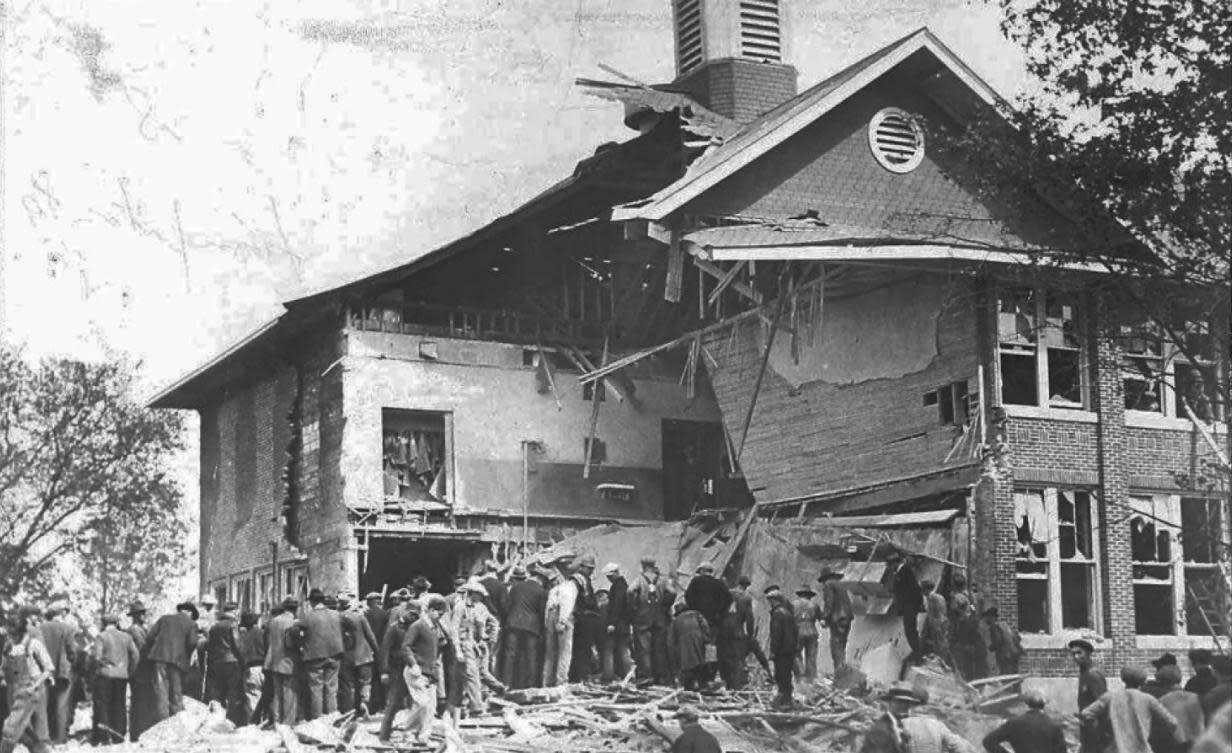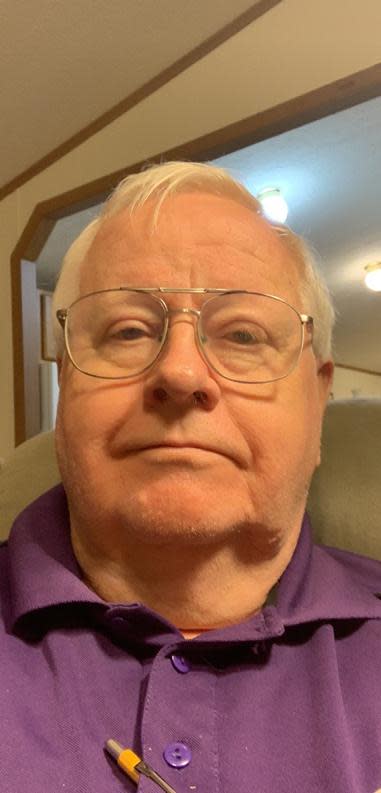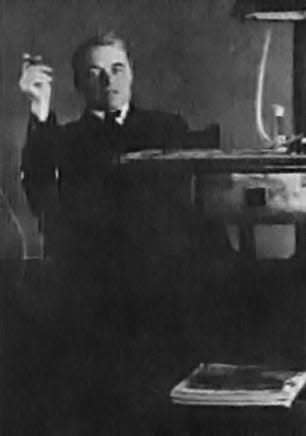Tecumseh man responsible for 1927 school bombing in Bath Township, north of Lansing

This is the story of Andrew Philip Kehoe.
Kehoe was born and raised in Tecumseh where he attended and graduated from the local high school. After high school, Kehoe attended Michigan State College in East Lansing where he studied electrical engineering. He worked as an electrician in St. Louis for several years. After suffering a head injury that left him in a coma for weeks, he returned to his father’s farm in Lenawee County.
Kehoe’s mother had died and his father remarried. His stepmother, in 1911, caught fire when an oil stove exploded. Kehoe attempted to extinguish the flames by throwing water on her but only managed to make matters worse by spreading the oil fire. Her burns resulted in her death the next day. Some believe that Kehoe had caused the stove to explode.

In 1912, Kehoe married and moved to Bath Township, north of Lansing, and purchased a farm. Kehoe did free favors for neighbors but is said to have had a nasty temper. He apparently shot a neighbor's dog that annoyed him by barking. He also beat a horse to death for failing to meet his expectations.
In 1924, he was elected trustee on the Bath school board. He served for three years and was treasurer for one year. He opposed spending money for anything except “the most necessary equipment." Kehoe hated paying taxes and attempted to get the value of his farm lowered to reduce his property taxes. In spite of his efforts, his taxes increased from $122.60 in 1922 to $198 in 1926 when the township voted to consolidate its one-room schools into a new school building. The new building had two wings, a north wing and a south wing.
In 1925, Kehoe was appointed temporary town clerk. Kehoe’s downhill slide began when he lost the election for town clerk in April 1926. To compound his disappointment, his wife had an untreatable chronic illness. In addition, he was unable to make his mortgage payments and the mortgage holder — his wife’s uncle — began foreclosure proceedings on the farm. He was quoted as saying, "If it hadn't been for that $300 school tax, I might have paid off this mortgage" and "If I can't live in that house, no one else will."
Kehoe secretly planned his revenge. When he began planning is unknown. He began purchasing pyrotol, an incendiary explosive commonly used by farmers to clear stumps and burn debris. He also bought a considerable amount of dynamite. He spread the purchases out to several different stores to allay suspicion. Later, investigators concluded that Kehoe may also have stolen a large amount of dynamite that went missing from a nearby construction site.

Kehoe had free access to the new school building during the summer of 1926. As an electrician, he had the knowledge necessary to carry out his plan. Kehoe concealed the explosives in lightweight pipes and bamboo fishing rods and moved them into the building, concealing them in the basement ceiling. He divided his explosives between the north and south wings of the building and wired them to explode at a predetermined time and date.
The carnage began sometime between May 16 and 18, 1927, when he secretly murdered his wife and burned her body. On May 18, at about 8:30 a.m., Kehoe set off firebombs in the buildings on his farm and in his house. At some point during his rampage, he wrapped wire around the legs of his horses, trapping them inside the barn where they died in the fire.
Firefighters rushed to the scene as Kehoe drove off in his truck. As he drove off, he stopped long enough to tell firefighters that they should get to the school.
At about the same time, Kehoe was driving away from the farm, the explosives in the north wing of the school exploded. Classes had been in session since 8:30. The explosion killed 38 people instantly, mostly children.
Kehoe arrived at the school about a half-hour after the explosion. He called the superintendent over to his truck. Witnesses say there was a struggle over what appeared to be a gun. There was another explosion when the dynamite in Kehoe’s truck was detonated killing Kehoe, the superintendent, a local farmer and an 8-year-old second grader.
The explosives in the south wing failed to detonate and were later removed by authorities. I don’t even want to think about what the death toll might have been if those explosives had gone off as Kehoe had planned.
During the investigation it was discovered that Kehoe had hung a stenciled sign on a fence at his farm that read, “CRIMINALS ARE MADE, NOT BORN.” The Bath School Massacre killed 45 and injured 58 making it the deadliest school killing in U. S. history.
Bob Wessel is vice president of the Lenawee County Historical Society and can be contacted at LenHist51@gmail.com.
This article originally appeared on The Daily Telegram: Bob Wessel: Tecumseh man responsible for 1927 school bombing in Bath

